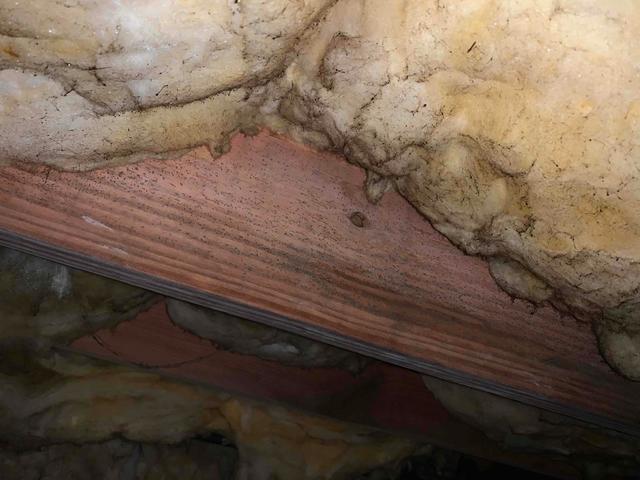
Mold and Mildew Growth
Mold and mildew can be found on many of the floor joists within this crawl space, which suggests a moisture problem within this space. Mold will grow on any organic material in the crawl space if the relative humidity is 60% or higher and temperatures reach around and above 70 degrees Fahrenheit. Mold and mildew will produce an odor that will seep up into the home and can cause irritation to those with asthma or allergies.
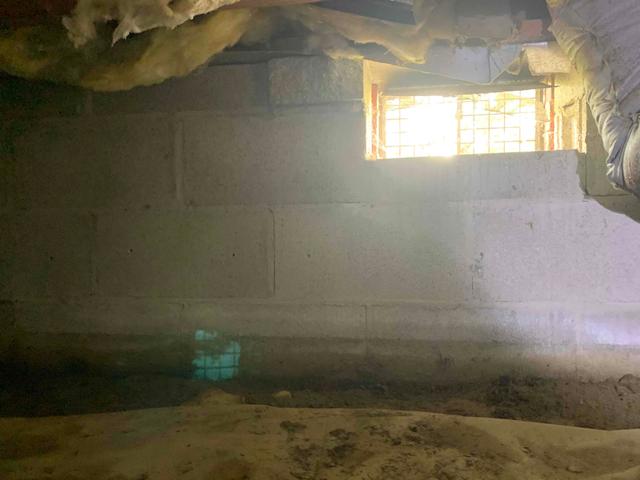
Open Vents in Crawl Space Walls
The open vents are counterproductive to sealing and controlling the environment of the crawl space. Outside air and moisture are free to infiltrate the crawl space and raise the relative humidity, causing the underbelly of a home to become damp and filled with mold growth during warmer seasons. Moisture leaking in can cause the fiberglass to sag and fall with the weight of all the water it soaks up, while water droplets pull the fine glass fibers apart, rendering it useless as insulation. Cold air during the fall and winter seasons will cause the floors above to feel chilly, causing the heating of a home harder than it needs to be, raising energy bills. While in the warmer seasons, moisture in the crawl space will raise the relative humidity, and condensation may occur on colder surfaces like the ductwork, while mold will freely grow on the organic materials of a crawl space.
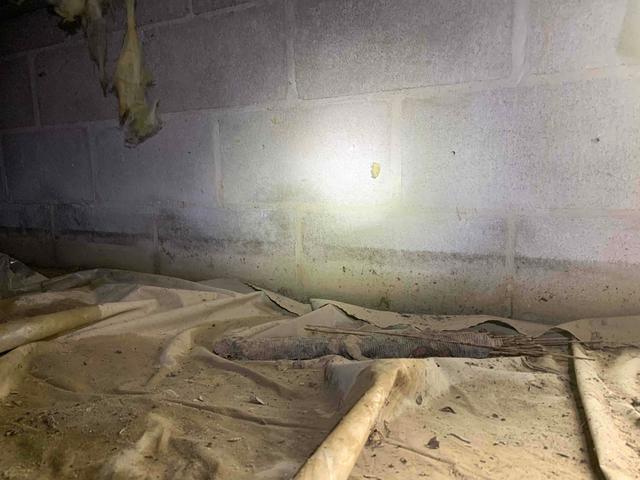
Crawl Space Foundations Walls
Many crawl spaces in Mattaponi have cinderblock foundation walls, which are porous and allow moisture and air to pass through them. Efflorescence can be found on these walls, which suggests water intrusion. Water leaking through these porous walls will drag sediments and salts from within the blocks to the surface, forming a coating. Without the proper insulation or sealing of these foundation walls, outside moisture and air can find its way into the crawl space, raising the relative humidity and allowing water puddles to form or flooding to occur during heavy rainstorms.
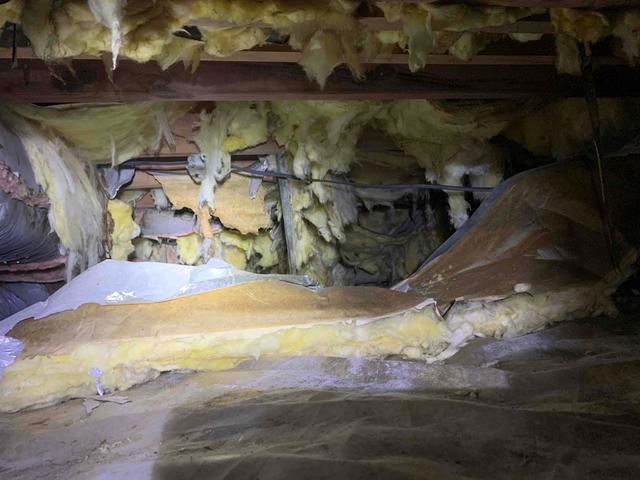
Falling Fiberglass
Fiberglass has fallen from the floor joists in the crawl space. Many of the pieces still clinging on are being pulled apart by moisture in the air. Moisture will deteriorate the fibers, tearing the fiberglass apart. Water that is soaked up will cause the fiberglass to become heavy and sag and eventually gravity will pull them down to the floor, littering the crawl space with debris and material. This insulation is rendered useless and will either need to be replaced or removed.
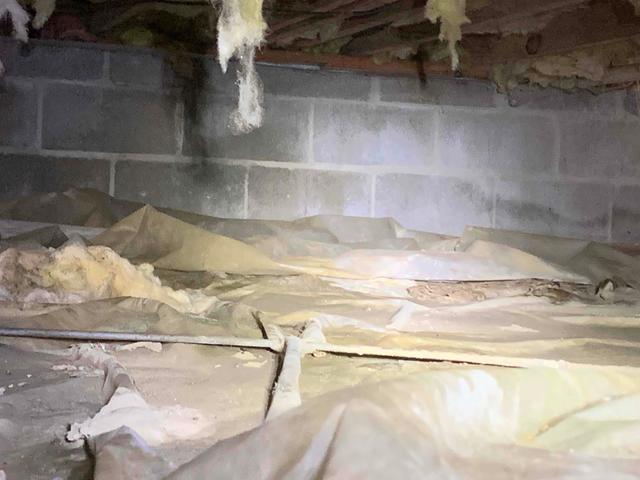
Inadequate Vapor Barrier
The flimsy vapor barrier shown on this crawl space floor is in bunches and ripped apart in many areas. The standard 6-mil black liner is often used in Virginian homes but is not effective at holding back the earth's moisture rising from the ground. The vapor barrier in this crawl space is covered in dust, debris, and fiberglass, and is torn apart in many places by service people. Exposed dirt flooring within many holes created in the liner allow moisture from the ground to rise into the crawl space, causing the relative humidity to increase, rendering this liner useless at keeping the crawl space sealed.
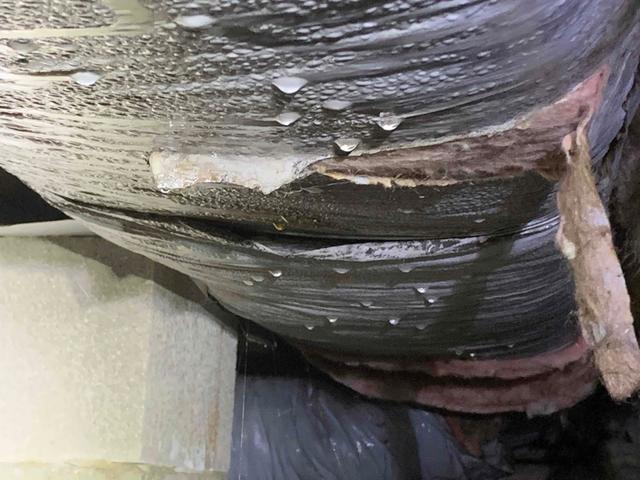
Condensation in the Crawl Space
Condensation can occur in a crawl space when the relative humidity reaches 100%, and the air cannot hold any more water. Condensation is a clear sign that there is too much moisture in the crawl space and can lead to many problems such as mold and mildew growth. This condensation, combined with the organic material found in wood, boxes, insulation, and other objects found in a crawl space, creates a perfect environment for mold to grow. Condensation can also be found on foundation walls and plumbing lines which often have cool surfaces. The only true solution to condensation is to encapsulate and seal the entire crawl space.

